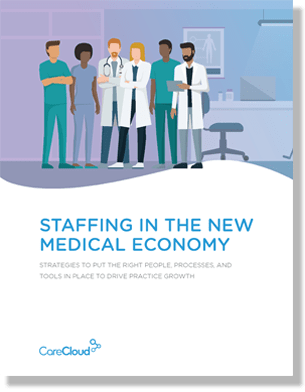Technology has changed at warp speed in the last decade, and we all feel ripple effects in several aspects of our daily lives, from how we manage our finances to how we shop for shoes. But in healthcare, most hospitals and doctor’s offices are still using software that predates the turn of the century, laden with updates and patches that make them clunky, inefficient and error-prone.
According to a recent Thomson Reuters report, the U.S. healthcare system currently wastes an estimated $600-850 billion every year due to easily fixable problems like administrative inefficiency and unnecessary treatments.
Cloud-based solutions are simple and elegant on the front end, thereby removing the most basic levels of complexity – bloated user interfaces, confusing toggling rules, and unnecessary rules for inputting data.
The common denominator in any successful technology venture is that no company will achieve success if it doesn’t make life as easy as possible for the consumer.
Imagine buying a book on Amazon.com, having to sort through multiple codes to find correct matches, then going through layer after layer of screens requiring multiple pieces of information, before even having the opportunity to purchase. Chances are that you would rather not have the book. This applies not only to healthcare IT companies, but should also be considered by medical providers as well.
So why does the current healthcare IT industry insist on making the doctor and patient experiences so convoluted?
Part of the problem is that many healthcare technology companies try to solve complicated problems by adding new technology to their current systems, providing upgrades and “patches” to fix problems. Essentially, it’s like adding wings and rooms and decks and balconies to a modest house without updating the actual foundation. It’s shaky at best.
In the same vein, by updating old software, systems become labyrinthine and clunky, held up by a series of patches and quick fixes. These unstable structures are riddled with problems and prone to failure.
Patients and doctors deserve better from healthcare IT, and they can have it. Native cloud services, which are web-based solutions that reside online instead of on a local server, allow for efficiency, scalability and easy adoption. There is no installation and there is nothing to download, meaning no updates or software upgrades. Instead, cloud services provide busy practices with efficiency and scalability, so their IT solution easily grows as they do.
Additionally, with cloud-based solutions, there’s no waste of valuable office time while the system gets updated. It’s all handled on the back-end. No muss, no fuss.
Another advantage of cloud-based solutions is that they’re incredibly flexible on two very important levels. First, as healthcare industry standards and regulations evolve, it is imperative for any system to be able to update those standards and regulations immediately. Good cloud-based solutions update on the back-end constantly so administrators don’t need to worry about uploading any new information.
Also, cloud-based solutions are elastic by nature, meaning that they can grow as practices do. If a practice or hospital hires a dozen new physicians using traditional client-based systems, chances are that they can expect to invest both significant time and money into enhancing the IT infrastructure they have in place. But with cloud-based solutions, since data isn’t stored on a local server, it is far simpler and more efficient to get up and running.
But this isn’t just about the technology. It’s about the habits that new technology is instilling in patients and medical office staff. No longer is it acceptable for patients to wait between business hours to talk to a staff member about something as simple as making an appointment. No longer is it acceptable for staff to have to complete and close out one screen to get to another.
Most of the non-cloud based systems are running on antiquated platforms, slowing down practices and frustrating everyone that touches them. The pain is chronic, and what is needed is a new approach to treatment.
Do you think moving to the cloud will help remedy the wasteful healthcare industry? Post your thoughts below.


